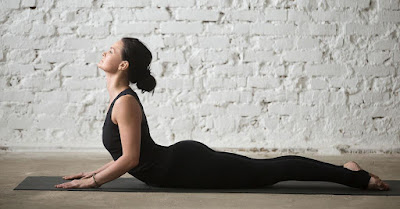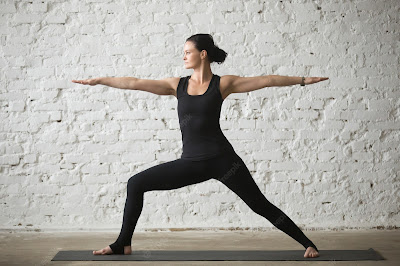YOGA
To begin an athlete yoga practice, get down on your hands and knees. With your forearms on the ground, curl your toes under and lift your knees off the floor. This will lengthen your tailbone and raise your hips toward the ceiling. Hold for about thirty seconds. This poses stretches the shoulder and upper back muscles as well as the hamstrings and calves. It also strengthens the legs and maximizes range of motion.
Downward Dog
Downward Dog is an excellent pose to warm up the body, engage the upper body, and stretch the calves. It can be performed with a straight or bent knee. To make it more athletic, flex your knees and bend your hips to add stability. The most common mistake with down-dog is not setting up properly. The proper stance and breathing are key.
To make this pose more effective, practice it regularly. The posture becomes easier to execute as you progress. You can also add it to your stretching routine and core workouts. Downward dog can be an excellent transition between planks and other core exercises.
Cobra Pose
Cobra Pose is an essential pose for athlete yoga, and is particularly important for the health of the spine. It can counteract the negative effects of sitting, and helps to build strength in the back. While it can be uncomfortable for some people, it is essential for everyone to perform the pose, including those with back pain. A dull back pain is usually a sign of weakness in the muscles that support the spine, so this exercise can help relieve this problem.
This yoga position stretches the hamstrings, hip flexors, and spine. It also helps athletes to combat fatigue and build confidence. Begin by lying on the floor with your hands under your shoulders. Stretch the legs out and extend the big toes straight back. This exercise will strengthen the quadriceps and strengthen the back. You should also focus on lifting the sternum and rolling your shoulders back to engage the chest.
Supine Twist
Supine twist is a yoga posture that twists the spine while lying on your back. It primarily twists at the waist, but it can also involve twisting of areas above and below. Ideally, it should be performed only when the spine is healthy. However, if you're currently experiencing back pain, it's best to consult with your healthcare provider before doing this pose.
Supine twist for athlete yoga works the hips, shoulders, and lower back. To perform this posture, bend both knees and reach the opposite arm away from your center. You should breathe slowly and steadily, and don't hold your breath. This posture stretches the quadriceps and hip flexors and improves balance.
Warrior II
Warrior II is an acrobatic yoga pose that requires a small separation between your feet. The back knee should be bent and the front knee slightly raised. You can also use a block or a folding chair to provide extra support and prevent the back leg from collapsing.
This yoga pose is helpful in many ways, but you must make sure that you perform it correctly to get the most out of it. One key tip is to make sure that your front foot never drifts behind your knee. This can cause unnecessary pressure on your kneecap (or patella). To avoid this, you should keep your front foot parallel to the ground, and always keep your back foot parallel to the front foot.
A beginner should take care to ensure that they open their entire body before beginning the pose. If the thighs are not open, you may feel a lot of pressure on the outer thighs. To correct this problem, press evenly through the ball of the front foot. Then, draw your knee toward the side of your pinky toe. The center of your knee should align with the second and third toes.
Camel Pose
Camel Pose is a powerful yoga exercise. It strengthens the body and improves posture. It also massages the kidneys and bladder. The backward bending in the pose also promotes spinal flexibility. In addition, it reduces back pain and helps maintain spinal alignment. Performing the pose on a regular basis will also prevent back injuries.
Camel Pose is a great exercise for athletes and non-athletes alike. It helps improve balance, increases back flexibility, and opens the hip flexors. It also improves posture and is great for relieving stress. Beginners can use the pose to test their body alignment and posture. For more advanced students, they can perform it standing. They can practice 25 to 50 reps.
Camel Pose requires a solid foundation. It should be performed on a firm mat. A beginner should always start with a basic version. Eventually, they will progress to the more challenging versions.
Also Read -:
What are the basic postures?
With consistent use, the poses intentionally transform into a meditation and focus exercise that lowers stress and promotes mental clarity.
- Headstand, or Sirsasana
- Sarvangasana, or shoulderstand...
- Harvest (Halasana)...
- Matsyasana, the fish
- Forward Bend (Paschimottanasana) when seated...
- Cobra pose (Bhujangasana)
- Locust (Salabhasana)
What type of yoga is best for athletes?
One of the most physically demanding types of yoga is power yoga. Power yoga, which is based on the Ashtanga yoga position sequence, helps you become more flexible and balanced while also strengthening your upper body. You transition between poses.
What are the eight foundation postures?
- Pose of Ease (Sukhasana).
- Majaryasana (the Cat Pose) and Bitilasana (the Cow Pose).
- Tadasana, or Mountain Pose.
- Adho Mukha Svanasana, also known as Downward Facing Dog Pose.
- Balasana or Child's Pose.
- Bhujangasana, or Cobra Pose.
- Dandasana, or the Staff Pose.
- Ardha Matsyendrasana, also known as the half-Lord of the Fishes Pose
Why is yoga important for athletes?



.jpg)



.jpg)

0 Comments